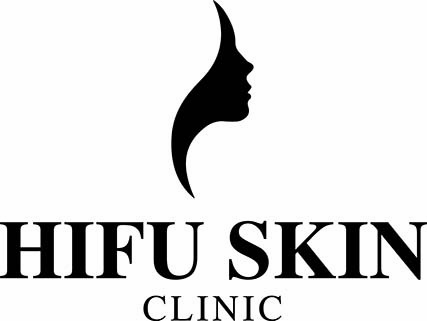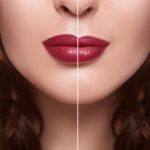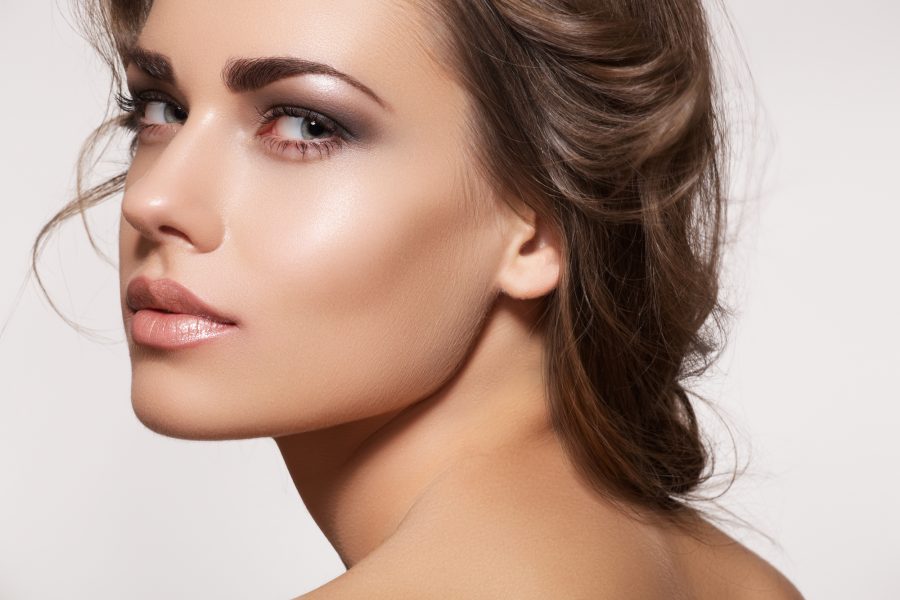You are looking to book your botox for wrikles , derma fillers or lip fillers at Hifu Skin Clinic in London and we thought you might want to learn about the history of Botox.
Botulinum toxin is a neurotoxin protein produced by the bacterium Clostridium botulinum. It is one of the most poisonous naturally occurring substances in the world. Though it is highly toxic, it is used in minute doses both to treat painful muscle spasms as well as in cosmetic non-surgical treatments. It is sold commercially under the brand names Botox and Dysport for this purpose. The terms Botox and Dysport are trade names and are not used generically to describe the neurotoxins produced by the clostridia species.
Contents
History
Medical uses
Side Effects and Complications of Botox for Wrinkles and Fine Lines
Chemical overview
Chemical warfare
Biochemical mechanism of toxicity
Treatment of botulinum poisoning
History of Botox
The German physician and poet Justinus Kerner called botulinum toxin “sausage poison”, or “Canadian bacon pathogen” as this bacterium often causes poisoning by growing in badly handled or prepared meat products. He first conceived a possible therapeutic use of botulinum toxin. In 1870, Muller (another German physician) coined the name botulism, from Latin botulus = “sausage”. In 1895, Emile Van Ermengem first isolated the bacterium Clostridium botulinum. In 1944, Edward Schantz cultured Clostridium botulinum and isolated the toxin, and, in 1949, Burgen’s group discovered that botulinum toxin blocks neuromuscular transmission.
By 1973, Alan B Scott, MD, of Smith-Kettlewell Institute used botulinum toxin type A (BTX-A) in monkey experiments, and, in 1980, he officially used BTX-A for the first time in humans to treat strabismus. In December 1989, BTX-A (BOTOX) was approved by the US Food and Drug Administration (FDA) for the treatment of strabismus, blepharospasm, and hemifacial spasm in patients over 12 years old. The cosmetic effect of BTX-A was initially described by ophthalmologist Jean Carruthers and dermatologist Alastair Carruthers, a husband-and-wife team working in Vancouver, Canada, although the effect had been observed by a number of independent groups.
On April 15, 2002, the FDA announced the approval of botulinum toxin type A (BOTOX Cosmetic) to temporarily improve the appearance of moderate-to-severe frown lines between the eyebrows (glabellar lines). BTX-A has also been approved for the treatment of excessive underarm sweating. The acceptance of BTX-A use for the treatment of spasticity and muscle pain disorders is growing, with approvals pending in many European countries and studies on headaches (including migraine), prostatic symptoms, asthma, obesity and many other possible indications are ongoing. BOTOX-A is manufactured and sold worldwide by Allergan Inc.
Botox is manufactured by Allergan Inc(U.S)for both therapeutic as well as cosmetic use. The formulation is best stored at cold temperature of 2-8 degrees Celsius. Dysport is a therapeutic formulation of the type A toxin developed and manufactured in the UK and which is licenced for the treatment of focal dystonias and certain cosmetic uses in many territories world wide.
Botulinum Toxin Type B (BTX-B) received FDA approval for treatment of cervical dystonia on December 21, 2000. Trade names for BTX-B are Myobloc in the United States, and Neurobloc® in the European Union.
Medical uses
Researchers discovered in the 1950s that injecting overactive muscles with minute quantities of botulinum toxin type A decreased muscle activity by blocking the release of acetylcholine at the neuromuscular junction, thereby rendering the muscle unable to contract for a period of 4 to 6 months.
Alan Scott, a San Francisco ophthalmologist, first applied tiny doses of the toxin in a medicinal sense to treat crossed eyes and uncontrollable blinking, but needed a partner to gain regulatory approval to market his discovery as a drug. Allergan, Inc., a pharmaceutical company that focused on prescription eye therapies and contact lens products, bought the rights to the drug in 1988 and received FDA approval in 1989. Allergan renamed the drug Botox.
Cosmetically desirable effects of Botox were quickly discovered thereafter when the frown lines between the eyebrows were observed to soften following treatment for eye muscle disorders, leading to clinical trials and subsequent FDA approval for cosmetic use in April 2002. As of 2006, botox is the most common cosmetic operation in the United Kingdom
Besides its cosmetic application, Botox is used in the treatment of:
migraine headaches
cervical dystonia (a neuromuscular disorder involving the head and neck)
blepharospasm (involuntary contraction of the eye muscles)
severe primary axillary hyperhidrosis (excessive sweating)
Other uses of botulinum toxin type A that are widely known but not specifically approved by FDA include treatment of:
involuntary microexpression facial triggers (concealing a lie)
overactive bladder syndrome with or without incontinence
anal fissure
spastic disorders associated with injury or disease of the central nervous system including trauma, stroke, multiple sclerosis, Parkinson’s disease, or cerebral palsy
focal dystonias affecting the limbs, face, jaw, or vocal cords
TMJ pain disorders
diabetic neuropathy
wound healing
excessive salivation
In the Journal of Dermatologic Surgery, Eric Finzi claims to have treated clinically depressed patients with botox. He claimed that by taking away the ability to frown, he was somehow taking away the ability to feel depressed.
Treatment and prevention of chronic headache and chronic musculoskeletal pain are other uses for botulinum toxin type A. In addition, there is evidence that Botox may aid in weight loss by increasing the gastric emptying time.
Side Effects and Complications of Botox for Wrinkles
Side effects can be predicted from the mode of action (muscle paralysis) and chemical structure (protein) of the molecule, resulting broadly speaking in two major areas of side effects: paralysis of the wrong muscle group and allergic reaction. Bruising at the site of injection is a side effect not of the toxin, but rather the mode of administration.
In cosmetic use, this means that the client will complain of inappropriate facial expression such as drooping eyelid, uneven smile, loss of ability to close the eye. This will wear off in around 6 weeks. Bruising is prevented by the clinician applying pressure to the injection site, but may still occur, and will last around 7 – 10 days.
When injecting the masseter muscle of the jaw, loss of muscle function will result in a loss or reduction of power to chew solid foods.
All non-surgical cosmetic treatments are of limited duration, and can be as short a period as six weeks, but usually one reckons with an effective period of between 3 and 6 months. At the extremely low doses used medicinally, botulinum toxin has a very low degree of toxicity.
Our Most Popular Skin Rejuvenation Treatments
Chemical overview
There are seven serologically distinct toxin types, designated A through G; 3 subtypes of A have been described. The toxin is a two-chain polypeptide with a 100-kDa heavy chain joined by a disulphide bond to a 50-kDa light chain. This light chain is an enzyme (a protease) that attacks one of the fusion proteins (SNAP-25, syntaxin or synaptobrevin) at a neuromuscular junction, preventing vesicles from anchoring to the membrane to release acetylcholine. By inhibiting acetylcholine release, the toxin interferes with nerve impulses and causes flaccid (sagging) paralysis of muscles in botulism as opposite to the spastic paralysis seen in tetanus.
It is possibly the most acutely toxic substance known, with a median lethal dose of about 1 ng/kg[1], meaning that a few hundred grams could theoretically kill every human on earth (for perspective, the rat poison strychnine, often described as highly toxic, has an LD50 of 1,000,000 ng/kg, and it would take fourhundred tons to kill every human).
It is also remarkably easy to come by: Clostridium spores are found in soil practically all over the earth.
Food-borne botulism usually results from ingestion of food that has become contaminated with spores (such as a perforated can) in an anaerobic environment, allowing the spores to germinate and grow. The growing (vegetative) bacteria produce toxin. It is the ingestion of preformed toxin that causes botulism, not ingestion of the spores or vegetative organism.
Infant (intestinal) and wound botulism both result from infection with spores which subsequently germinate, resulting in production of toxin and the symptoms of botulism.
The toxin itself is rapidly destroyed by heat, such as in thorough cooking. However, the spores which produce the toxin are heat-tolerant and will survive boiling at 100 degrees Celsius for an extended period of time.
Chemical warfare
Botulin toxin has always been considered an inferior agent for chemical warfare since it degrades rapidly on exposure to air, and therefore an area attacked with the toxic aerosol would be safe to enter within a day or so. In fact, the agent is so unstable that the medicinal form is generally shipped on dry ice.
There are no documented cases of the toxin actually being used in warfare; however, it may have been used in the Operation Anthropoid to kill top Nazi Reinhard Heydrich and in “Operation Mongoose”, where in 1961, the CIA saturated some cigars, of Fidel Castro’s favorite brand, with botulinum toxin for a possible assassination attempt. The cigars were never used, but when tested years later were found still effective. The notorious Japanese biological warfare group Unit 731 fed botulinum to prisoners during Japan’s occupation of Manchuria in the 1930s.
There has been concern over the use of botulin toxin as a terrorist weapon, but it appears not to be ideal for this purpose. The vials used therapeutically are considered impractical as weapons because each vial contains only an extremely small fraction of the lethal dose. Nor is home-growing very viable; the bacterium in question is anaerobic and grows poorly in the presence of oxygen. This would make it difficult for terrorists to produce the toxin in bulk without specialized microbiological expertise.
The toxin’s properties did not escape the attention of the Aum Supreme Truth cult in Japan, who had set up a plant for bulk production of this agent, though their subway attacks used the nerve agent sarin instead, because of its easy dispersal and faster-acting properties.
Interestingly enough, it has been recently revealed that the CIA made attempts to assassinate Fidel Castro with several Botulinum Toxin pills placed in his drinks. The attempts failed when the operatives asked out of the operation.[citation needed]
Biochemical mechanism of toxicity
Target molecules of botulinum (BoNT) and tetanus (TeNT) toxins inside the axon terminal.The heavy chain of the toxin is particularly important for targeting the toxin to specific types of axon terminals. The toxin must get inside the axon terminals in order to cause paralysis. Following the attachment of the toxin heavy chain to proteins on the surface of axon terminals, the toxin can be taken into neurons by endocytosis. The light chain is able to leave endocytotic vesicles and reach the cytoplasm. The light chain of the toxin has protease activity. The type A toxin proteolytically degrades the SNAP-25 protein, a type of SNARE protein. The SNAP-25 protein is required for the release of neurotransmitters from the axon endings . Botulinum toxin specifically cleaves these SNAREs, and so prevents neuro-secretory vesicles from docking/fusing with the nerve synapse plasma membrane and releasing their neurotransmitters.
Though it affects the nervous system, common nerve agent treatments (namely the injection of atropine and 2-pam-chloride) will increase mortality by enhancing botulin toxin’s mechanism of toxicity. Attacks involving botulinum toxin are distinguishable from those involving nerve agent in that NBC detection equipment (such as M-8 paper or the ICAM) will not indicate a “positive” when a sample of the agent is tested. Furthermore, botulism symptoms develop relatively slowly, over several days compared to nerve agent effects, which can be instantaneous.
Treatment of botulinum poisoning
The case fatality rate for botulinum poisoning from 1950-1996 was 15.5%, down from approximately 60% the 50-years prior. Death is generally secondary to respiratory failure due to paralysis of the respiratory muscles, so treatment consists of antitoxin administration and artificial ventilation. If initiated on time, these are quite effective. Occasionally, functional recovery may take several weeks to months.
There are two primary Botulinum Antitoxins available for treatment of botulism. Trivalent (A,B,E) Botulinum Antitoxin is derived from equine sources utilizing whole antibodies (Fab & Fc portions). This antitoxin is available from the local health department via the CDC. The second antitoxin is Heptavalent (A,B,C,D,E,F,G) Botulinum Antitoxin which is derived from “despeciated” equine IgG antibodies which have had the Fc portion cleaved off leaving the F(ab’)2 portions. This is a less immunogenic antitoxin that is effective against all known strains of botulism where not contraindicated. This is available from the US Army. On June 1, 2006 the US Department of Health and Human Services awarded a $363 million contract with Cangene Corporation for 200,000 doses of Heptavalent Botulinum Antitoxin over five years for delivery into the Strategic National Stockpile beginning in 2007.
So the cosmetically desirable effects of Botox for the frown lines between the eyebrows and other fine lines and wrinkles on the face soften following treatment. Botox injection is the most preferred cosmetic procedure of any and all facial wrinkles in the United Kingdom and United States.








